Our Favorites: Exhibitions and Events in 2014
Over the past year, Tokyo Art Beat’s writers and contributors have taken in artworks, exhibitions and events in many venues across the city. Here is a short list of TABlog’s highlights from 2014.
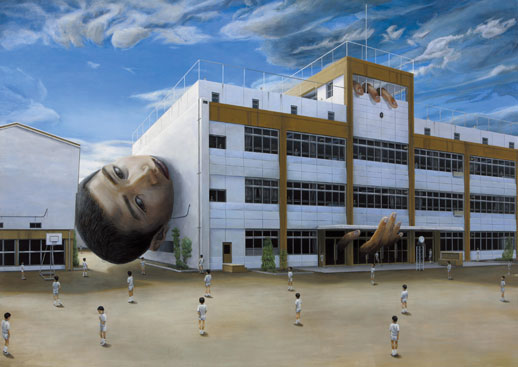
Jessica Jane Howard
2014 hailed a number of notably strong painting exhibitions. Of these, the ones that stood out most for me were “Notes, Evidence of Dreams” a traveling exhibition of Tetsuya Ishida’s works that opened at Hiratsuka Museum of Art in April, and Tomoo Gokita’s “The Great Circus” at Kawamura Memorial DIC Museum of Art. Ishida’s posthumous retrospective featured more than 100 of his works, many of which provide a fiercely satirical social commentary on Japan in the post-bubble recession period. In his first solo museum show, Gokita, who slowly rose to fame following his influence on certain sub-cultures of the 1990s and thereafter, represents and entirely different approach to the medium with his predominantly monochrome graphic tableaux.
Finally, I couldn’t end this year without mentioning how much I enjoyed “The Power of Images” at The National Art Center Tokyo. Based on the idea that human history is indeed a ‘history of images,’ this exhibition went all out on displaying some of the most exquisite ethnographic articles from around the globe in a fresh and revitalizing way that encouraged visitors to look beyond geographical boundaries, cultural stereotypes and historical divisions.
Stuart Munro
Ken Kagami,whose main reason is to contravene convention and encourage you to laugh ‘with’ him and not ‘at’ him, had his first show of bronze works earlier this year at Misako & Rosen. Q-tips, toilet rolls, junk food and even a bra were all cast in bronze and displayed in acrylic vitrines. Purposely thrust into the conventional surroundings of a white gallery, his work is a massive breath of fresh air embracing and ridiculing traditional and craft with an infectious sense of humour. It set him up for a year of recognition, with an appearance at this years Frieze Art Fair London amongst others. What with his regular “All-Night Sponpon” radio show installations at both Tokyo Art Book Fair and guerrilla gathering at Nakameguro’s Voilld including amongst others Masano Hirayama and Motoyuki Daifu, his industry equally fosters a diverse community of like-minds, as thought-provoking and as eye-raising as his.
The discreet show of paintings, “Paintings” at Hagiwara Projects, was panacea to this summer’s “The Way of Painting” group show at Tokyo Opera City Gallery, which suffered from chaotic spacing and the unnecessary dominance of at least one room with a single artist. Hagiwara Projects, however, provided a much simpler study of the provocative nature of painting bringing together New York natives Joshua Abelow, Heather Guertin, and Zak Prekop along with their counterpart Shunsuke Imai. It worked. With Guertin, also a stand-up comedian, the show was self-aware but not self-conscious, expressing an awareness of the problems paintings face at a time dominated by ‘image’ making.
Photographers by trade, Kazuo Yoshida and Daisuke Yokota are names in their own right. Together they are MP1, a group who put their photography to one side and produced an arresting installation originally filmed in the foothills of Mt Fuji at night and restaged at g3 Gallery at TOLOT/heuristic Shinonome. Directly referring to Tony Conrad’s 1966 film “The Flicker” and accompanying instructions — which greet you as you enter the gallery and pull back the back curtain — the shock of watching and walking through their installation points to their willingness to explore territory and ideas far from photographic convention, in which images are fixed and final. Visceral and unapologetic, it was a thoroughly welcome sight.
Osamu Kanemura, similarly, stretched out beyond his own body of work. Known for brutal monochrome images of central Tokyo and cities throughout Japan and Europe, he swapped his film camera for a digital one. The results, that also included video, took abstract views through windows — oblique passing shots from behind glass and through a sea of signage, restaurant menus, fish tanks and shop displays — not only brought colour and sound to his work but also compounded his visually seductive view of a city in a permanent state of collapse. The exhibition featured no wall hung prints. A TV screen and projector flanked each other, looping between two sets of work, some brand new (such as Dead Stick Landing) and some old yet rephotographed and shown here (Dead Stock Companion). His titles are just as seductive as his imagery. Expect more in the year to come.
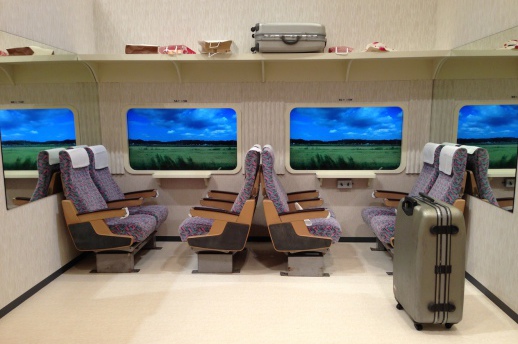
Paul Baron
“Around Michel Gondry’s World” at the Museum of Contemporary Art Tokyo: Finally a show where we’re encouraged to use props, touch and interact with installations, dance in them, and role play. So much fun!
Nicolas Buffe, “The Dream of Polifilo” at Hara Museum of Contemporary Art: This was clearly a childhood spent watching classic American animation and Japanese series like Gavan….it felt very familiar!
Kenichiro Mizuno “Microfiction 2014” at Unseal Contemporary: These were lovely cell frames by an artist turned animator (not the usual other way around) for an upcoming animation. Affordable art now hanging in my home.
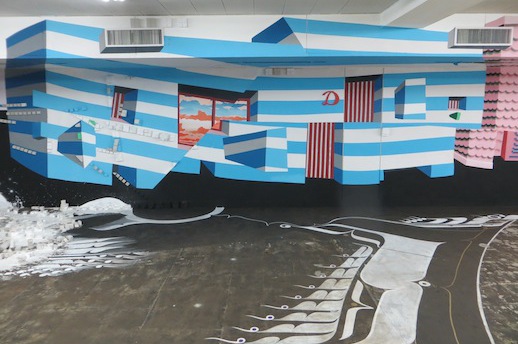
Justin Egli
It’s only now that I sit down and try to recall everything I’ve seen this year that I realise how many solid exhibitions there were in Tokyo in 2014. Recognition has to go to some of the shows put on by smaller galleries: notably Tsuyoshi Hisakado’s subtle kinetic installation, Quantize (2014), at Ota Fine Arts and Fiona Tan‘s photo works at the neighbouring Wako Works of Art. Not forgetting, David Lynch had a welcome return to Tomio Koyoma’s Hikarie 8/ Art Gallery in Shibuya.
On a larger scale, Trans Arts Tokyo was back in Kanda, with a number of events spread out over the area. For me, Skywhale (2013) – a hot air balloon designed by artist Patricia Piccinini – was a highlight, but I feel this year’s Trans Arts lost the underground vibe that made it so interesting when it debuted in 2012. This year’s event felt too organised and, well, too safe. Thankfully, whatever Trans Arts seemed to lack in spontaneity, #BCTION made up for in spades – with 50 street artists taking over a soon-to-be-demolished building in central Tokyo.
The “Go-Betweens: The World Seen Through Children” exhibition at the Mori Art Museum showed what can happen when the real world blurs with that of imagination – and contemporary artist Shinji Ohmaki continued this notion when he released massive amounts of sparkling soap bubbles and transformed a small urban playground in Kita Senju into a dreamland.
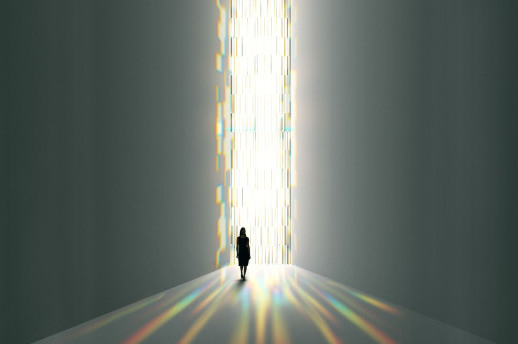
Paul Heaton
This year I found myself repeatedly coming back to the Museum of Contemporary Art Tokyo for a series of varied exhibitions. The most impressive of these was Tokujin Yoshioka’s “Crystallize.” Yoshioka isn’t short of media attention or critical acclaim, but the success of his first large-scale solo exhibition is worth mentioning again. His ongoing crystallizations of natural forms such as Rose and Spider’s Thread always seem to capture something new. And while it’s a shame the show didn’t include his wonderful Snow installation from 2010, his re-conceived Rainbow Church evoked a quasi-religious euphoria by bathing viewers in rainbow-coloured rays from 500 crystal prisms.
Nick West
As well as festivals, 2014 was about rediscovering graphic arts for me. In January, I saw a solo exhibition of Kengo Nakamura’s work at Megumi Ogita Gallery. Probably best described as an appropriation artist, Nakamura made several works on paper using emoji, or emoticons. As well as being a great introduction to his practice, it was an imaginative, lighthearted show to see.
During the summer, I visited some extraordinary monsters at “Spectres, Ghosts and Sorcerers in Ukiyo-e.” Wonderfully vivid, it collated all manner of folkloric demons, scuttling and slithering about. Although I expected the creatures to have been conjured from supernatural tales alone, I was surprised how often military figures kept reappearing in the notes, suggesting satire too.
Autumn’s highlight was #BCTION’s vast intervention of an office building due for demolition. Admittedly, some of the appeal was the happenstance of finding such an event before it finished, but the quality and variety of the works – murals, installations, video, neon, graffiti – makes me almost welcome the prospect of bulldozers in 2015 if it means more shows like this take place.
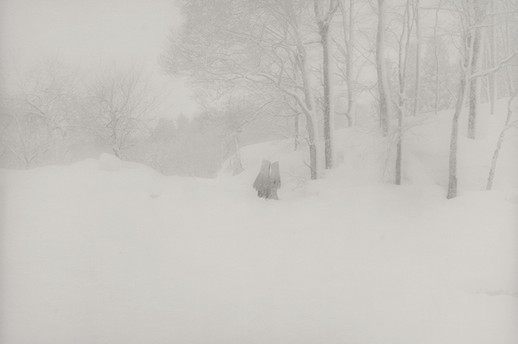
Emily Wakeling
Immersive, video-based shows often appeal to me and two of the most successful of this type of exhibition this year were Hiraki Sawa‘s solo show at Tokyo Opera City Art Gallery and Fiona Tan‘s at the Tokyo Metropolitan Museum of Photography. Both shows were successful at providing a part-physical, part-psychological space in which to contemplate the meaning and pleasures of existence. On quite a different note, I think Misako & Rosen’s exhibition of Dutch artist Daan Van Golden did a great job of adding a new interpretation of this man’s cataclysmic encounter with Japan over 50 years ago. Finally, words can hardly describe the love and romance found in Rongrong & inri’s “Tsumari Story,” a collection of photographs from the couple’s residency in the depths of “snow country” in Japan’s north.
Tokyo Art Beat thanks all its readers for their support in 2014 and wishes everyone a safe and happy new year.
Emily Wakeling
Emily Wakeling



